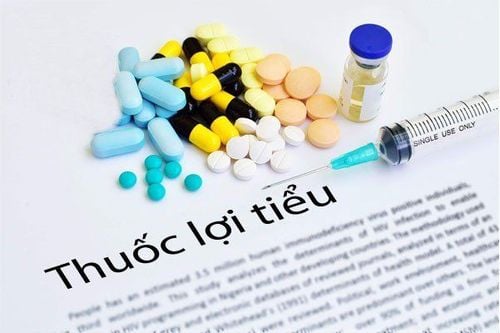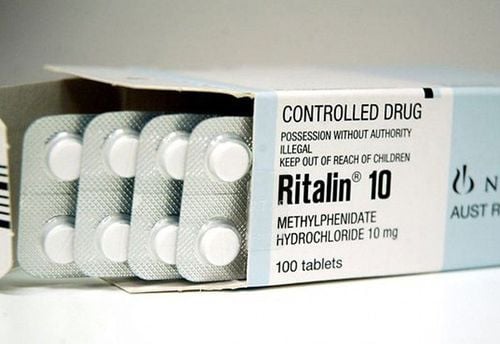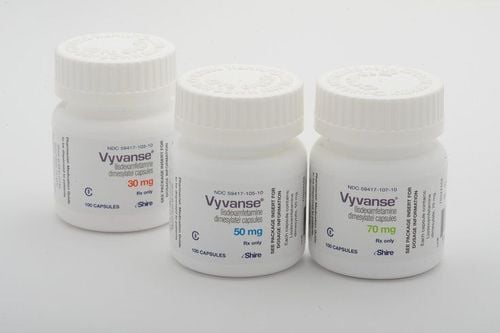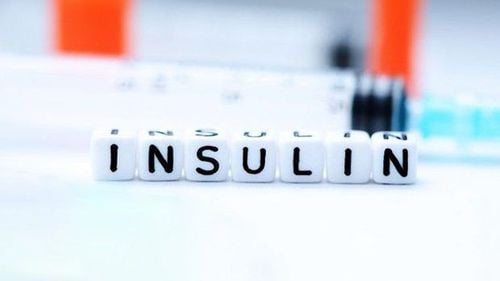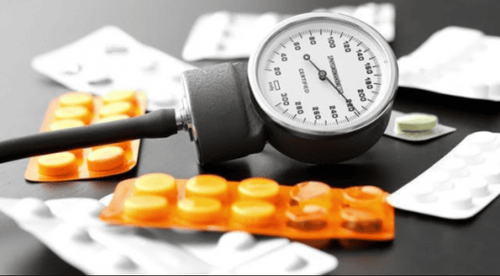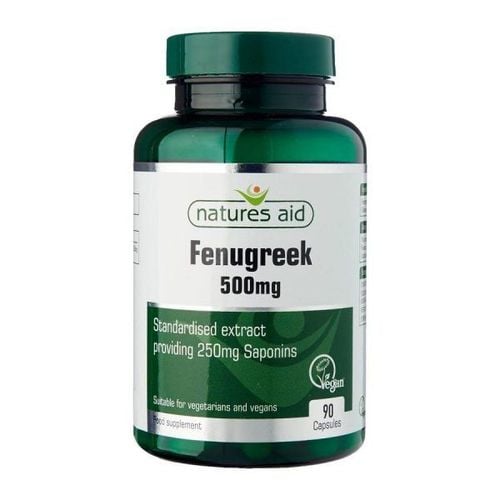This is an automatically translated article.
Atomoxetine is a drug to treat attention deficit hyperactivity disorder in addition to psychological, social and many other treatments. Atomoxetine can help increase attention, focus, and stop restlessness. Atomoxetine works by restoring the balance of certain natural neurotransmitters in the brain.
1.What is Atomoxetine? Atomoxetine is a noradrenaline reuptake inhibitor used as a treatment for attention deficit hyperactivity disorder. Symptoms of ADHD that interfere with an individual's ability to function in school, work, or social settings and include:
Inattention (e.g., making careless mistakes , losing things needed for the task) Hyperactivity (eg, unable to sit still) Impulsivity (eg, interrupting or intruding on others) Hyperactivity less common in adults. A person can experience severe inattention without hyperactivity or impulsivity. Atomoxetine is not a CNS stimulant, so it is different from other treatments for ADHD. Instead, atomoxetine produces more noradrenaline in the patient's brain.
Hypotheses about the mechanism of action of atomoxetine are assumed to primarily affect natural neurotransmitters in the brain. One of those chemicals is norepinephrine. This neurotransmitter is released from nerve endings to carry messages from one neuron to another in the brain. After sending the signal, noradrenaline is reabsorbed by nerve endings and atomoxetine is a molecule that stops this process. That means noradrenaline activity levels in the brain will increase.
Higher levels of noradrenaline in the brain make people more alert and ready for action. The patient will feel like the body is strengthened and more energetic. Therefore, the drug Atomoxetine will help increase the patient's attention and concentration, and prevent impulsive actions without thinking.
However, when the level of noradrenaline is higher outside of the cerebral circulation, it has effects in different parts of the body, including the heart, intestines and lungs. Accordingly, it is difficult to predict how patients will be affected by adverse events, because each person's response to the drug is different.

Thuốc Atomoxetine được sử dụng trong điều trị chứng rối loạn tăng động giảm chú ý
2. How to use Atomoxetine? Atomoxetine can be taken orally in the form of a capsule with an outer shell containing gelatin.
At the same time, patients can also take atomoxetine in liquid form. Atomoxetine oral solution contains sorbitol and should not be taken by anyone with a hereditary fructose intolerance. Moreover, the excipients also contain sucralose, however this will not affect the blood sugar of the patient if he has diabetes.
Patients should only take atomoxetine as prescribed by the doctor with the number of times used can be from once or twice a day. Patients should take one dose in the morning at breakfast. If twice-daily dosing is required, another dose may be taken in the late afternoon or early evening. In case the patient takes the drug later in the evening, it may be more difficult to sleep.
When using, it is necessary to swallow the capsule with some water without chewing. Atomoxetine does not interact with food, so it does not matter whether it is taken before or after a meal. Do not open the capsule to remove the powder, as it may sting the eyes. If the capsule is accidentally split, the patient should wash their hands thoroughly. If powder gets into eyes, rinse with water and see a doctor as soon as possible.
Patients will not be able to get the full benefit of atomoxetine for four to six weeks. Once the effects of atomoxetine are seen for attention deficit hyperactivity disorder, your doctor will likely recommend that you take it for at least six months to a year.
If a dose is forgotten, the patient should take it as soon as possible. However, if you forget to take it in the evening just start over the next day without taking a double dose. In case of forgetting to take the medicine for a few days, the symptoms may return.
Atomoxetine doesn't need to be taken forever. It's important for your doctor to review this treatment at least once a year to see if you still need it.
The doctor can discuss with the patient and family about stopping medication to see how this affects the patient. For children with attention deficit hyperactivity disorder, discontinuation of medication can be done during school holidays so as not to disrupt the child's learning.

Người bệnh nên sử dụng thuốc đúng hướng dẫn của bác sĩ điều trị
3. What are the notes when taking Atomoxetine? While using Atomoxetine, note and tell your doctor if the following occur:
Suspected drug allergy Ever had thoughts of suicide or ever tried to take your own life past self Have heart problems or a feeling of increased heart rate Have high or low blood pressure Yourself or a family member with a history of heart disease or stroke Have liver problems Have had symptoms mental disorders including hallucinations (hearing voices or seeing things that aren't there), believing things that aren't true, or adding suspicion Have had a history of mania (feeling excited or over-excited, causes abnormal behavior and agitation) Has had unusually aggressive, unfriendly, or angry feelings Have a history of epilepsy or had seizures for any other reason Have a mood swing Have had repeated seizures in any part of the body that can't be controlled or repeated sounds and words Have narrow-angle glaucoma An adenoma If you're taking a central nervous system stimulant such as methylphenidate, your doctor will usually recommend taking it with atomoxetine for a few weeks as you switch treatments. This allows atomoxetine to build up in the body's systems and have a chance to start working before the stimulant stops.
If you want to get pregnant, you need to inform your doctor. People with attention deficit hyperactivity disorder when trying to get pregnant face important decisions. Because attention deficit hyperactivity disorder, if left untreated, will bring risks to the fetus as well as to the mother. It is important to discuss the risks and benefits of treatment with your doctor and caregivers. Regarding breast-feeding, caution should be exercised as it is not known whether atomoxetine passes into breast milk.
4. What are the possible side effects of Atomoxetine? Common side effects when using atomoxetine are:
Abdominal discomfort, nausea, vomiting, loss of appetite, constipation, dry mouth, headache Feeling sleepy, lethargic or weak during the day, trouble sleeping at night Reduced libido or sexual side effects Changes in menstrual cycle, urinary retention, hot flashes, sweating, severe fatigue, irritability or mood swings. These are all rare symptoms. Increased heart rate and blood pressure Risk of transition to mania and mania, especially in people with bipolar disorder Serious side effects can include hepatotoxicity, increased suicidal thoughts and behavior, edema cardiovascular and cardiovascular complications 5. What drugs can interact with atomoxetine? Atomoxetine should not be taken with or within two weeks of monoamine oxidase inhibitor antidepressants (MAOIs), including phenelzine (Nardil®), Tranylcypromine (Parnate®), selegiline (Emsam®), isocarboxazid (Marplan®). , or the antibiotic linezolid (Zyvox®). Taking atomoxetine with or within 2 weeks of MAOIs can lead to seizures, fever, or dangerously high blood pressure that can lead to death.
The following medicines may increase the amount and effects of atomoxetine:
Paroxetine (Paxil®), Fluoxetine (Prozac®) and Quinidine (Quinidex®) Asthma/breathing medications (eg, albuterol) There may be an increased risk of high blood pressure and rapid heart rate (tachycardia) when taking atomoxetine. Because of the possible effects of atomoxetine on blood pressure, it should be used with caution with other drugs that increase or decrease blood pressure.
In addition, patients should also avoid drinking alcohol or using illegal drugs while taking this medicine. They may reduce the benefits (e.g., worsen your condition) and increase the side effects (e.g., sedation) of the medication.

Người bệnh không nên tự ý phối hượng thuốc vì chúng có thể gây tương tác với nhau
In a nutshell, Atomoxetine is a prescription medication used to treat people with attention deficit hyperactivity disorder. Atomoxetine is used in addition to non-pharmacological treatments to control symptoms of attention deficit hyperactivity disorder. Because it can take several weeks before the full benefits of this medication are seen, patients should follow their doctor's directions for medication exactly and continue to take atomoxetine as directed to achieve effective disease control.
For people with attention deficit hyperactivity disorder, in addition to taking medication, doctors can also combine psychotherapy methods to help the patient's health improve in the direction of: the best.
Psychological Clinic - Vinmec Times City International General Hospital has the function of examining, consulting and outpatient treatment of psychological and mental health problems. With modern equipment and a team of highly specialized doctors, the clinic is capable of implementing psychological tests and intensive psychotherapy for medical examination and treatment. Therefore, customers can completely trust the quality of examination and treatment at the hospital.
Reference source: nami.org - youngminds.org.uk - webmd.com




